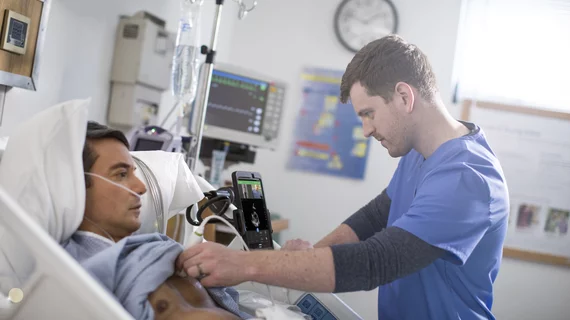Major teaching hospital finds half its on-call abdominal ultrasounds call utilization into question
Reviewing 1,600 diagnostic abdominal ultrasounds obtained overnight at a large tertiary care center, researchers have found nearly 50% brought back negative results and only 8% detected incidentalomas. The investigators encourage radiologists to consider the numbers and take steps to “reinforce their gatekeeper function” to help cut ultrasound overutilization.
Abdominal Radiology posted the team’s report April 29.
Radiologist Thomas Kwee, MD, PhD, and colleagues at University Medical Center Groningen in the Netherlands drew data from their institution over a 12-year window ending in 2017.
They found negative ultrasounds were most frequently recorded when the ordering department was anesthesiology. Runners-up as potentially unnecessary exams included, in descending order, ultrasounds performed to assess gallbladders, biliary ducts, transplanted organs, trauma injuries and postrenal obstructions.
Meanwhile ultrasounds that had the most positive findings for the suspected diagnoses were ordered by urology. Filling out the list of high positives were scans for acute oncology and appendicitis.
Incidentalomas turned up at significantly higher rates in older patients and in patients with suspected liver illness or injury.
Kwee and co-authors note that their findings may not generalize to hospitals in other European countries or in countries that have a “more defensive healthcare system” due to concerns over malpractice actions, “such as the United States.”
Further, they point out, on-call centers at hospitals in the Netherlands differ from U.S. emergency rooms, which “serve as triage center for those without primary care (with imaging as perhaps the fastest triaging method).”
In addition, the authors comment,
[I]t is hard for [American] emergency physicians to get a specialist consultation without imaging already performed, ultrasound is primarily performed by sonographers (who do all examinations independently, but with available oversight), and CT is more frequently used as initial imaging modality in acute abdominal pathology (except for right upper quadrant pain, exclusion of postrenal obstruction, and superficially located organs).”
Interestingly, Kwee et al. had hypothesized negative abdominal ultrasounds to spike at their center over the 12-year period they reviewed. In fact, the proportion of negative to positive findings stayed about the same, as did the rate of incidental findings.
These data, they state,
are important for clinicians and radiologists when deciding on the appropriateness of an ultrasound request. They can also be used to inform patients about the expected yield of the ultrasound examination and the risk of detecting an incidentaloma (with potential financial and emotional costs), as part of the informed consent and shared decision-making process.”
The study is available in full for free.
More coverage of nonmaternity ultrasound:
Q&A: William Zoghbi breaks down the future of echocardiography
AI looking handy with 3D abdominal ultrasound
Deep learning and rads comprise an ‘efficient pipeline’ for detecting, classifying thyroid nodules
American College of Radiology loses fight with CMS over ultrasound payment restriction
Reference:
Tim Sluijter, Derya Yakar and Thomas Kwee, “On-call abdominal ultrasonography: the rate of negative examinations and incidentalomas in a European tertiary care center.” Abdominal Radiology, April 29, 2022. DOI: https://doi.org/10.1007/s00261-022-03525-1

